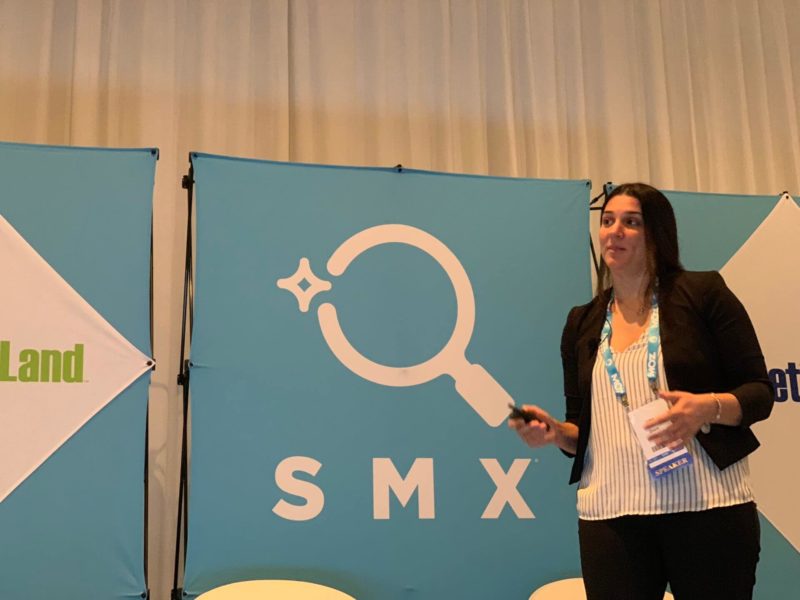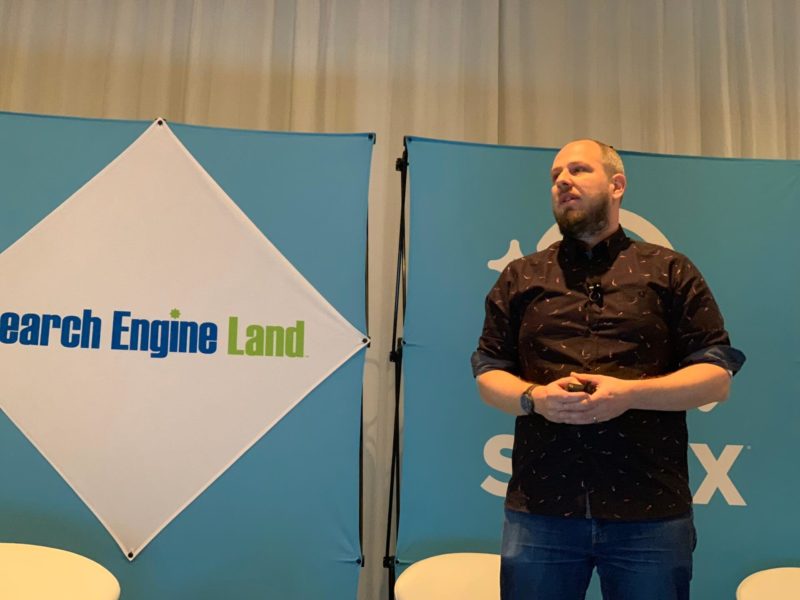How to get links to your site: Create content that people want to link to
At SMX East Alli Brenner, Lisa Barone and Paddy Moogan talked about how to make content that attracts links.

NEW YORK – A panel of experts at SMX East on Thursday talked about ways to create content that attracts links, which is one of the most important SEO ranking factors. The session was moderated by Debra Mastaler. Here are a few best practices each of them discussed.
Alli Brenner
According to Alli Brenner, senior SEO manager at Sapient Razorfish, you need link-worthy content first. You can use personas to come up with these content ideas. But it is not just about the persona, but what your people are doing on your site. If you can write content that is aimed at the audience reading your content, you can score links.
Demographics don’t tell the whole story, understanding the visitor and their intent tells the story.
When making a category page, think about the intent of the page and any questions your customers may have when they visit the page. Make sure the page fulfills the intent of the user on that page.
Types of content that attracts links:
- Images
- Comparison
- Videos
- Text
- Charts & graphs
Tips for category pages that people want to link to:
- Use a short and specific URL
- Put valuable information at the top of the page
Images are a great way to get links to your content. Use social media, like Pinterest, Instagram, Twitter, Facebook, etc. These links are nofollowed but it gets more awareness and who knows who will find the content via social media and link to it later? Give people buttons to make it easier for them to share. Share icons and buttons help. Reach out to bloggers, talk to them, don’t be afraid to reach out.
Lisa Barone
Lisa Barone, CMO at Overit, talked about how creating content doesn’t always mean people will read it or link to it. You need to create content that provides value and sparks emotion, Lisa said.
Here are the types of content that people want to link to:
- Evergreen content – It is instructional, resource-focused, authority-gaining and ageless. It is always relevant, valuable and informative. It includes how-to tips, explainers, guides, lists, videos, FAQs, images, infographics and others.
- Video – Video content is so underused but they are so important. It is trust-building, versatile, easy to consume and share and preferable over text for many people.
- Data – The importance of visualizing and communicating data is an essential skill. If you can help people understand the data, that is gold. Data is everywhere, you can get it from including search and digital ads, ad serving solutions, CRM, social media and sales databases. You can also create your own data through case studies or surveys. People who use your data have to cite you, hence a link.
Stories: Tell a story, people love to hear stories. If you can understand your audience, it helps you write what they need. What are their questions, fears, challenges, their “so what” questions and figure out the types of stories that appeal too them.
Content hooks help you frame and tell your story. Here are some content hook types:
- Contrary hooks
- Attack hooks
- Humor hooks
- Ego hooks
- Evergreen hooks
Frame your story by telling where you we are now, show where you can go, present the obstacles, overcome it and show why it is better.
Write like a human:
- Be concise
- Avoid jargon
- Show, don’t tell
- Make it actionable
- Leave questions
- Write it at an 8th grade level
Paddy Moogan
Paddy Moogan, co-founder at Aira, talked about ways to leverage content and data for low-budget campaigns.
Develop reusable content: This works well for low-budget clients. Data can often be reused. So if you create data or find data that has been published, you can reuse it over and over again for content. If someone releases data yearly, you can make an infographic per year and swap in the new data into the same template every year.
Outreach should be an ongoing activity: The typical process is you make an idea, design it, prospect it and do outreach but it doesn’t have to work like this. You do not need to do this process each time. For example, if you post something about summer, you don’t have to wait for summer in your area to happen, it can also be summer in another part of the world. So keep the outreach going. You can build up a content bank of which you can use to constantly do outreach.
Learn what works across industries: Make sure you are storing data on every campaign you launch and every link you build. If you can track the link attributes, are they nofollowed or followed. Which types of industries give you more links? What type of content gets you more links. The more you track, the more you can prioritize where you put your efforts.
Exclusive content: Go for a big top tier newspaper or magazine and offer that journalist an exclusive coverage for 24-48 hours. It supposedly works well for data-backed stories. Make sure to ask your client what their top newspapers or magazines are, and try go after those first.
Outreach to second-tier websites: Find out who is linking to your content, but those who are linking not to your original source URL but to others who are covering you. Reach out to those and ask them to link to you, the original source.
Use keyword research for more links: Find these keywords in analytics, the open graph, title tags and descriptions. Think about the keywords that you can rank for in content pieces and campaigns.
Get past the gatekeepers: The internal PR teams or external PR agencies can be very protective of their contacts. So try to learn about what they are doing with their campaigns. You can create and then share a content calendar with those PR people. Make your own contact lists, share them with others and build the list up. Just be careful with this with GDPR in the EU.
[related-posts section_title=”More insights from SMX” top_post_title=”Check out the SMX West 2019 agenda and sign up now for lowest rates” top_post_url=”https://marketinglandevents.com/smx/west/agenda-at-a-glance/?source=ml&utm_medium=newspost&utm_campaign=smx-west” sel_ids=”307000,306978,307265,307302,307075,307052,307480,307286,306987,307890″ ml_ids=“250837,251959″ post_list_limit=”3″]
Related stories
New on Search Engine Land


